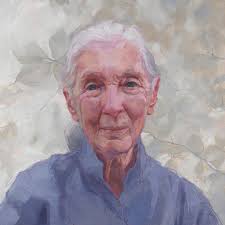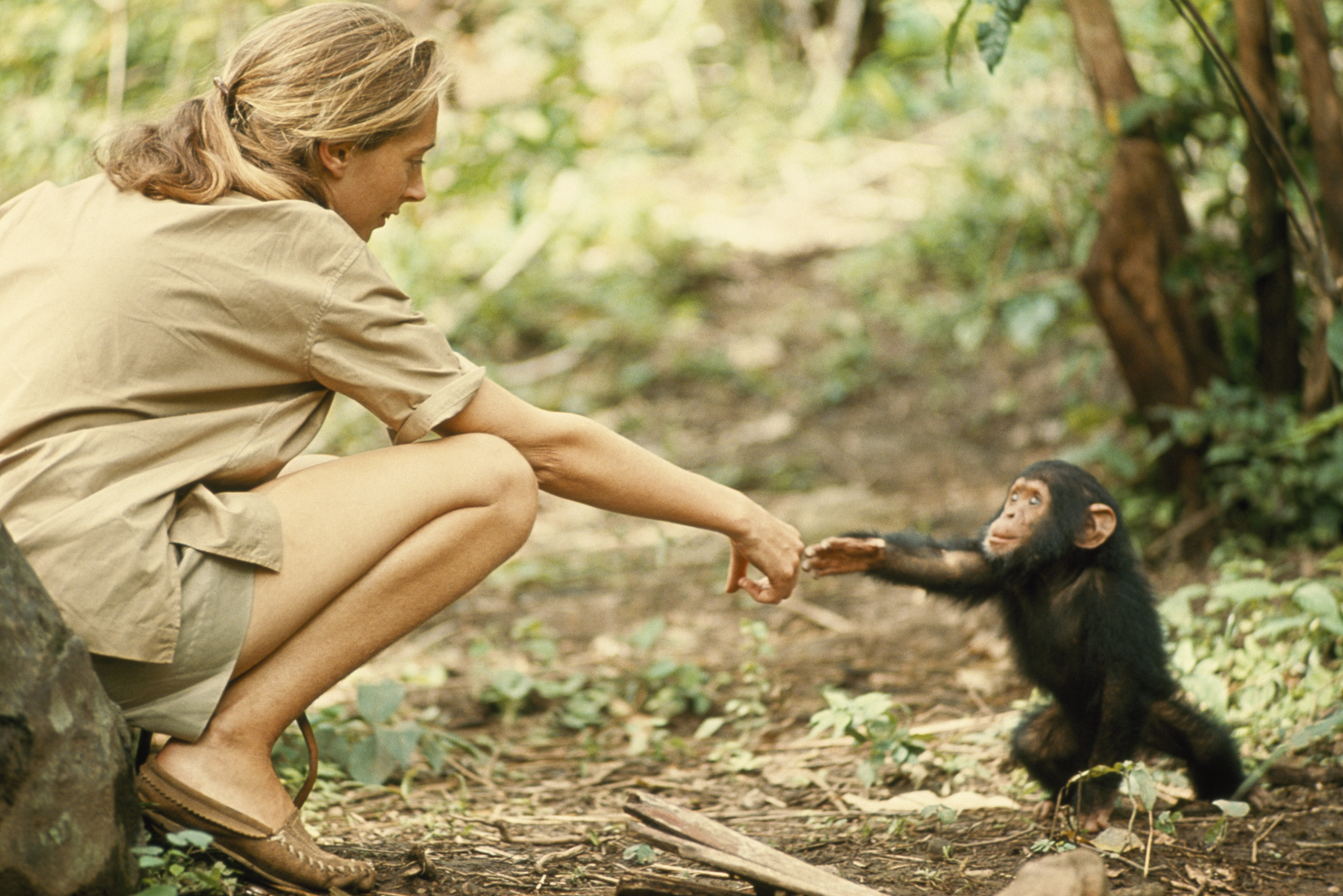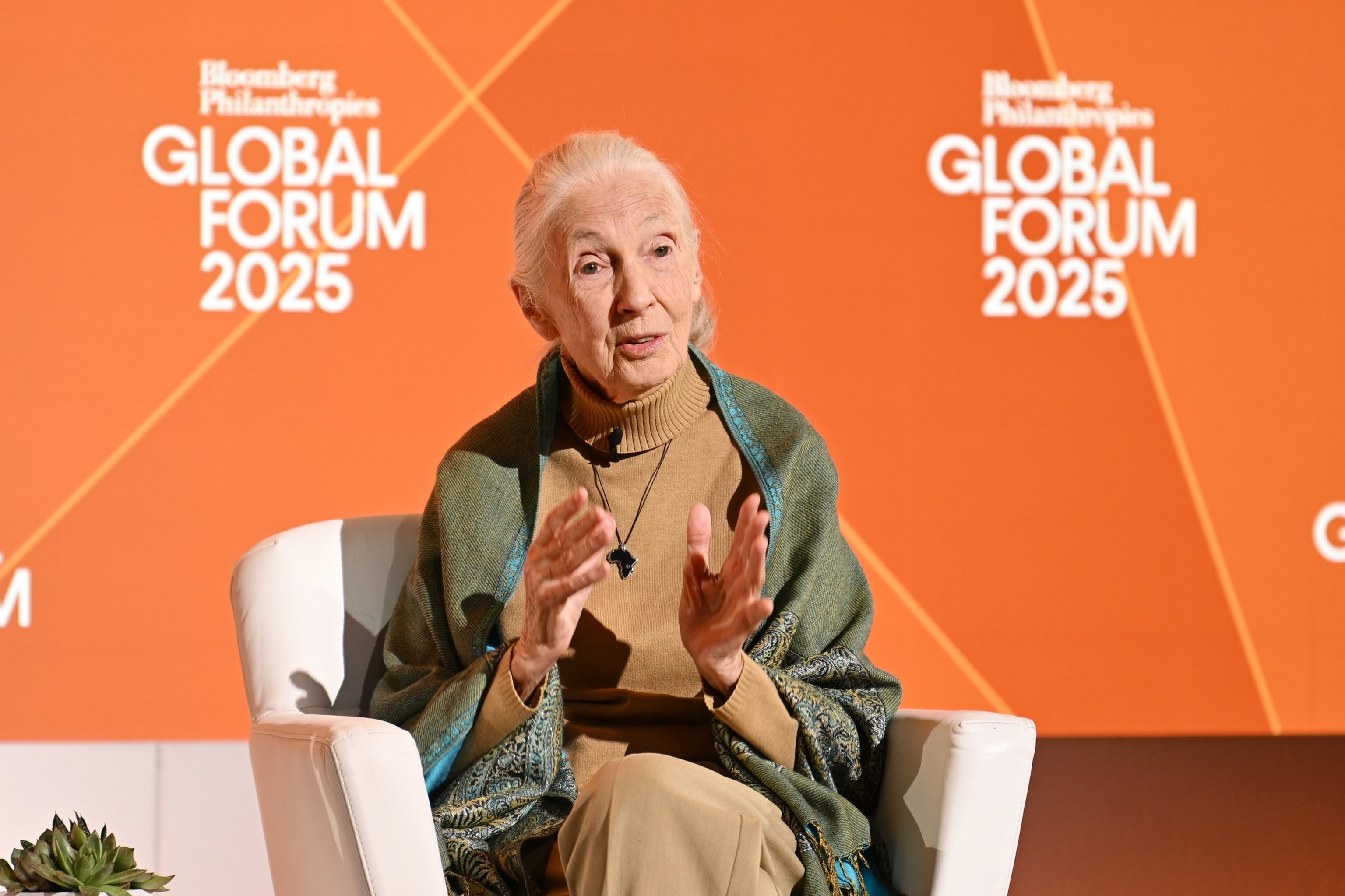Did you know a single observer in the Tanzanian rainforest rewrote the story of human evolution? Jane Goodall died on October 1, 2025, at age 91, her passing a quiet echo of the wild calls she once mimicked. This trailblazing primatologist didn’t just study chimpanzees—she bridged worlds, urging us to see our shared kinship with all life.

NPG 7169; Dame Jane Goodall – Portrait – National Portrait Gallery
In an era of environmental despair, Goodall’s life was a beacon of hope, blending science, activism, and unyielding optimism. As tributes pour in from global leaders and fellow scientists, we reflect on how her work transformed conservation and our understanding of animal intelligence. This article dives deep into her extraordinary journey, offering lessons that endure beyond her lifetime.
Table of Contents
- Early Life and Formative Years
- Breakthrough Discoveries in Gombe
- Pioneering Conservation Initiatives
- Literary Contributions and Global Influence
- Awards, Honors, and Lasting Recognition
- Expert Opinions on Her Impact
- Q&A: Answering Key Questions
- Summary: Seeds of Hope
Early Life and Formative Years
Jane Goodall died after a life that began far from the jungles she would immortalize. Born Valerie Jane Morris-Goodall on April 3, 1934, in London, England, she grew up in a middle-class family that nurtured her curiosity. Her mother, Vanne, a novelist, gifted young Jane a stuffed chimpanzee named Jubilee, sparking a lifelong fascination with primates.
From childhood, Goodall devoured books on Africa, dreaming of Tarzan-like adventures. At 10, she hid in a henhouse for hours to witness a hen laying an egg—a testament to her patient observation skills that later defined her research. “I wanted to go to Africa and live with animals,” she later recalled in her memoir In the Shadow of Man.
World War II disrupted her early years, but it also instilled resilience. Evacuated to the countryside, she explored nature freely, collecting tadpoles and observing wildlife. By 18, with no formal university degree—unusual for a scientist of her caliber—she worked as a secretary and waitress to save for her African odyssey.
In 1957, at 23, Goodall arrived in Kenya, working as a secretary for anthropologist Louis Leakey. Her enthusiasm impressed him; he hired her to observe fossil sites. Soon, Leakey secured funding from the Wilkie Foundation for her to study chimpanzees at Gombe Stream Chimpanzee Reserve (now Gombe Stream National Park) in Tanzania. No PhD, no prior fieldwork—just raw determination.
Influences That Shaped a Visionary
Goodall’s early influences were eclectic:
- Literature: Edgar Rice Burroughs’ Tarzan series fueled her romantic view of Africa.
- Family: Her father’s absence during the war strengthened her bond with her mother, who supported her unconventional path.
- Nature: Solitary walks in English woods honed her empathy for the natural world.
These roots taught her a profound lesson: Patience reveals truths science alone can’t uncover. As she noted in a 2017 interview, “You can’t get a PhD in knowing what makes a chimpanzee tick.” This ethos propelled her into uncharted territory, where she arrived in 1960 with little more than binoculars and boundless wonder.
Her early struggles included isolation—living in a tent amid scorpions and leopards—and funding woes. Yet, these forged her unbreakable spirit, setting the stage for discoveries that would upend anthropology.
Breakthrough Discoveries in Gombe
Arriving at Gombe in July 1960, Goodall faced elusive subjects. Chimpanzees fled humans, forcing her into months of stillness. “I sat from dawn till dark, day after day, week after week,” she described. Her breakthrough came in October, when she named a bold female “Flo,” rejecting the era’s numbering system. This anthropomorphic approach, though controversial, allowed intimate insights.
Jane Goodall died knowing her Gombe work redefined primates. In 1960, she observed tool use: Chimps stripped twigs to “fish” for termites, challenging the belief that tool-making was uniquely human. Leakey famously quipped, “Now we must redefine tool, or redefine man, or accept chimpanzees as humans!”
Her 50+ years at Gombe revealed complex societies. Chimps displayed emotions—joy in hugs, grief in mourning—and warfare, as in the 1974-1978 “Four-Year War,” where one troop annihilated another, exposing primal violence.
Key Observations That Shocked the World
Goodall’s field notes, now digitized archives, include:
- Tool Use and Culture: Chimps taught offspring techniques, passing “nut-cracking” like human traditions.
- Social Bonds: Females led migrations; males formed alliances, mirroring human politics.
- Meat-Eating: Contrary to vegetarian assumptions, chimps hunted colobus monkeys, altering dietary models.
- Personality Traits: Individuals like “Fifi” showed lifelong traits, proving animal individuality.
These findings influenced evolutionary biology, suggesting human-chimp divergence was recent (around 6 million years ago). Goodall’s immersive method—becoming “one of them”—earned criticism for bias but yielded irreplaceable data.
In 1962, Leakey arranged Cambridge funding; she earned a PhD in ethology in 1965 without coursework, based solely on her thesis. Back at Gombe, she trained Tanzanian researchers, empowering locals in global science.

education.nationalgeographic.org
Jane Goodall
Her work taught us: Empathy in science uncovers hidden intelligences. Today, Gombe’s 100+ chimps continue under JGI, a living tribute to her vision.
Pioneering Conservation Initiatives
Witnessing habitat loss in the 1960s, Goodall shifted from observer to advocate. “I realized the chimps were disappearing faster than I could study them,” she said. In 1977, she founded the Jane Goodall Institute (JGI), expanding from research to global action.
Jane Goodall died as JGI operated in 19 countries, protecting 5 million acres. Key programs include:
- Roots & Shoots (1991): Youth-led environmental groups in 100+ countries, tackling local issues like plastic pollution. Over 800,000 members by 2025.
- TACARE (1994): Community-centered conservation in Tanzania, empowering women with microloans, health education, and reforestation. It reduced deforestation by 30% in pilot areas.
- Tchimpounga Sanctuary (1992): Rehabilitates 60+ orphaned chimps in Congo, addressing bushmeat trade.
Goodall’s holistic approach linked ecology with human welfare. In the 1980s, she lobbied against chimp exports for labs, testifying before U.S. Congress. Her 2000 co-founding of Ethologists for the Ethical Treatment of Animals pushed for humane research.
Innovative Strategies for Lasting Change
Goodall’s methods were revolutionary:
- Community Buy-In: TACARE trained 4,000+ villagers as “environmental ambassadors,” boosting sustainable farming.
- Youth Empowerment: Roots & Shoots projects, like Uganda’s anti-poaching patrols, foster lifelong activism.
- Global Partnerships: Collaborations with NASA (2018-2020) funded eco-products; sales supported JGI.
Her impact? Chimp populations stabilized in key areas, and global awareness surged—WWF reports cite her influence in 70% of primate conservation policies. She taught that conservation isn’t top-down; it’s about igniting hope in communities.
In her later years, Goodall traveled 300 days annually, speaking to millions. Even at 90, she trekked Gombe, proving age is no barrier to passion.
Literary Contributions and Global Influence
Goodall’s pen was as mighty as her fieldwork. Her books demystified science, blending narrative with data to reach lay audiences.
Jane Goodall died leaving 20+ titles, translated into 40 languages. In the Shadow of Man (1971) sold millions, chronicling Gombe’s magic. The Chimpanzees of Gombe (1986) won the R.R. Hawkins Award for its behavioral depth.
Later works shifted to hope amid crisis:
- Reason for Hope (1999): A spiritual manifesto against despair.
- Harvest for Hope (2005): Advocates mindful eating to combat factory farming.
- Seeds of Hope (2014): Explores plants’ wisdom, delayed by plagiarism fixes but hailed for biodiversity pleas.
- The Book of Hope (2021): Co-authored, it outlines four reasons for optimism—resilience, human intellect, nature’s tenacity, future generations.
Children’s books like My Life with the Chimpanzees (1988) inspired young readers, earning UNICEF praise.
How Her Writing Sparked Movements
- Media Reach: Documentaries like Jane (2017) introduced her to new generations.
- Cultural Shift: Her stories humanized animals, influencing veganism and animal rights—PETA credits her for 20% membership growth in the 1990s.
- Educational Tools: JGI’s curricula, based on her books, reach 1 million students yearly.
Goodall’s influence extended to policy: Her UN Messenger of Peace role (2002) amplified calls for sustainable development goals. She taught us: Stories heal the planet by stirring hearts.
Awards, Honors, and Lasting Recognition
Jane Goodall died adorned with accolades that mirrored her humility. Starting with the CBE in 1995, she rose to DBE in 2003 for environmental services.
Milestones include:
- Kyoto Prize (1990): For ethology advancements.
- UN Messenger of Peace (2002): Lifelong advocacy.
- Templeton Prize (2021): $1.6 million for progress in religion/spirituality.
- Time 100 (2019): Most influential.
- Presidential Medal of Freedom (2025): Awarded posthumously for conservation.
The French Legion of Honour and Gandhi-King Nonviolence Award underscored her peaceful activism. “Awards are nice, but the real honor is seeing change,” she quipped.
Her recognition taught: True legacy lies in actions, not titles.

Jane Goodall receives 27th Catalunya International Award for her contribution to humankind
Expert Opinions on Her Impact
Conservationists worldwide mourn Jane Goodall died, but her spirit endures. Dr. Ian Redmond, former JGI trustee, says: “Jane didn’t just save chimps; she saved our souls by reminding us we’re part of nature’s web.”
Primatologist Frans de Waal notes: “Her tool-use discovery was a paradigm shift, proving intelligence is distributed across species. Without Jane, we’d still cling to human exceptionalism.”
UNEP Executive Director Inger Andersen adds: “Goodall’s Roots & Shoots empowered a generation; her legacy is in the youth leading climate fights today.”
These voices affirm: Goodall’s blend of science and compassion offers a blueprint for planetary healing.

What Jane Goodall said in her last video message before her death – ABC News
Q&A: Answering Key Questions
What Caused Jane Goodall’s Death?
Jane Goodall died of natural causes on October 1, 2025, in Los Angeles during a U.S. speaking tour, per JGI announcement.
How Did She Change Primatology?
By observing without interference, naming subjects, and documenting emotions, she humanized animals, influencing ethical research standards.
What’s Next for Her Work?
JGI vows continuity; Roots & Shoots expands digitally, ensuring her vision thrives.
Can I Get Involved?
Join Roots & Shoots or donate to JGI—small acts echo her call to action.
Was She Optimistic to the End?
Yes; her final message urged, “Use your voice for the voiceless.”
Summary: Seeds of Hope
Jane Goodall died, but her seeds of hope flourish. From Gombe’s shadows to global forums, she taught patience, empathy, and action. Her discoveries bridged species; her activism mended ecosystems. As she said, “Only if we understand, will we care. Only if we care, will we help.” Let’s honor her by helping—plant a tree, advocate for wildlife, empower youth. In a warming world, Goodall’s legacy isn’t past; it’s our urgent future.
For more, visit the Jane Goodall Institute.

